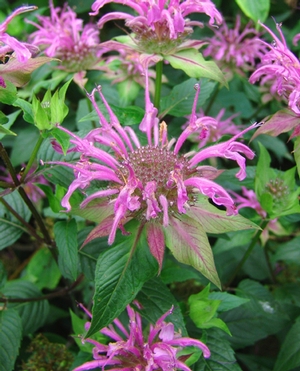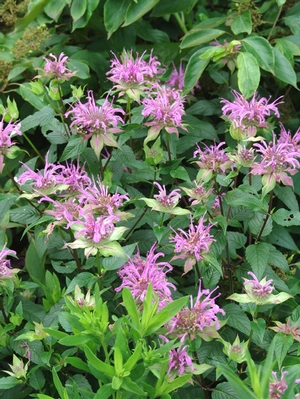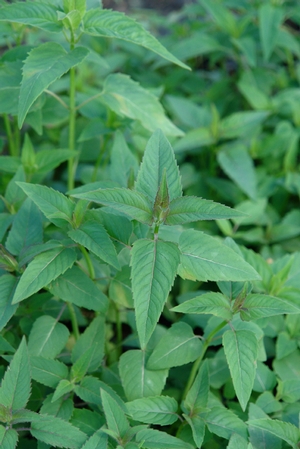Monarda fistulosa
Common: wild bergamotMonarda fistulosa LP50 - 50 per flat
- Height: 2'-5'
- Spread: 3'
- Spacing: 12"-24"
- Hardiness Zone(s): 3-8


Monarda fistulosa LP50 - 50 per flat


Lovely lavender flowers top aromatic foliage. Easy to grow in a perennial border, wildflower garden or meadow. Wild bergamot is a great naturalizing wildflower and a magnet for butterflies and hummingbirds. Monarda fistulosa is more tolerant of drought and resistant to powdery mildew than M. didyma.
Prefers dry to moist, organically rich, well-drained soil in full to part sun. More prolific in full sun and moist soils.
Lovely lavender flowers sit atop aromatic foliage for Monarda fistulosa, or wild bergamot. Easy to grow in a perennial border, this wildflower looks just as pretty in a wildflower garden or meadow. Wild bergamot is a great naturalizing wildflower and a magnet for butterflies and hummingbirds as it blooms for over a month in June to July, even through August. Growing 30-48” tall and 24-36” wide, Monarda fistulosa is more tolerant of drought and resistant to powdery mildew than M. didyma but carries the same features of square stems, lanceolate and serrated leaves, and strong branching roots that allow the plant to spread quickly. The flower color varies from lavender to pink and the variation is a response in part to environmental conditions. This plant was widely used medicinally by multiple tribes of Native American Indians and the dried leaves can be used for herbal teas.
Monarda fistulosa can be found as far north as Quebec and Manitoba, spreading down south to Georgia, Louisiana, and Arizona. Beebalm prefers full sun to part sun in average to moist soil conditions. It grows rampantly in moist rich loam but can tolerate drier conditions. In moist conditions, the plant is known to flop so a good plant to plant around other perennials that can provide structure. In drier conditions, the bottom leaves of the stems fall off, which also can be supported and hidden by a layered planting design and strong, perennial neighbors with a different season of interest.
Wild bergamot is particularly wonderful when planted near a spot where one can observe its flowers, not just for the beautiful blooms but also the wildlife attraction and how the seedheads dance in the early morning light after a frost. Monarda is deer and rabbit resistant. It provides habitat and forage to a wide variety of pollinators including bees, butterflies, moths, and hummingbirds as well as some specialist insects.